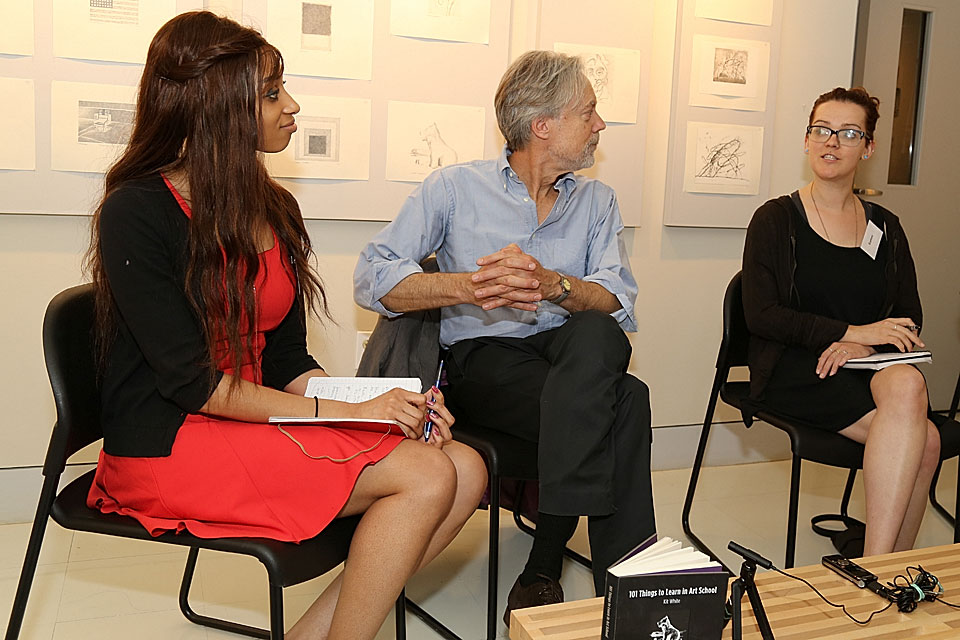A new show that features various works by Jackson Pollock, Jules Olitski and Sam Gilliam at the Luther W. Brady Art Gallery offers a deconstructed look at how the process of teaching, learning and making art deserves as much credit as the end product.
“Art in the Making: A New Adaptation” opened at the Brady Art Gallery Wednesday, following an eponymous show in New York City that celebrated the anniversaries of three major New York art institutions: the 50-year-old New York Studio School of Drawing, Painting & Sculpture; the 125-year-old Pratt Institute; and the 140-year-old Art Students League of New York.
The Brady Art Gallery made several selections from the original show and added works from the GW Permanent Collection that represented the Corcoran School of the Arts and Design.
“It’s an exhibition honoring art and the history of who’s making art,” Brady Art Gallery Director Lenore Miller said, noting that everyone featured in the show has been either an art student or teacher at the above noted institutions.
Because educational experience was an integral part of the theme, Ms. Miller invited five GW M.F.A. candidates from the Professional Practices class in the Department of Fine Arts and Art History to the exhibition opening and gave them the chance to interview Kit White, one of the painters featured in the show.
A compact little black book called “101 Things to Learn in Art School” drove a lot of the discussion. Mr. White put it together while leading M.F.A. classes at the Pratt Institute. Each time he introduced a concept that a graduate student did not know, he would jot it down on a list that grew to more than 100 facts and lessons. He brought his thoughts on the role of art to the conversation with students.
“We help construct collective identity. That’s what art does. If the community does not identify [with the art], it languishes in someone’s attic. If they do, it gets to be on the walls of this gallery,” he told the group of prospective artists as he gestured toward the Rauschenberg and Pollock pieces surrounding them.
Many of his lessons focused on what artists can improve in the classroom. He emphasized the importance of technical skills and remaining observant throughout the artistic process. But other recommendations included how to traipse through the real world of gallery transactions. He advised students against sending work to galleries blindly, insisting that the art world is small “and operates on a personal level.” Instead, future artists should make real connections with buyers and gallery owners and find ways to garner more support for their work. The last point was particularly compelling to M.F.A. candidate Eames Armstrong, one of the student interviewers and a D.C.-based artist who participated in the event to pick up tips from Mr. White.
“A lot of the work I do is event-based or performance, so there aren’t really things to be bought and sold. I eschew the whole market that way, so alternative approaches to support systems are interesting to me, and I think it was a really nice way and concise way he put that,” she said.
Some of Mr. White’s most critical points came from his own relationship to drawing and painting. Creating art is a “back and forth,” he explained, and the artist is required to stay in tune with the work throughout the entire process.
“When you get it right, you say, ‘Oh, that looks good.’ It’s that kind of magic. It’s a controlled accident. Most painters are in the business of making controlled accidents,” he said.
“Art in the Making: A New Adaptation” will be on display until July 17.


